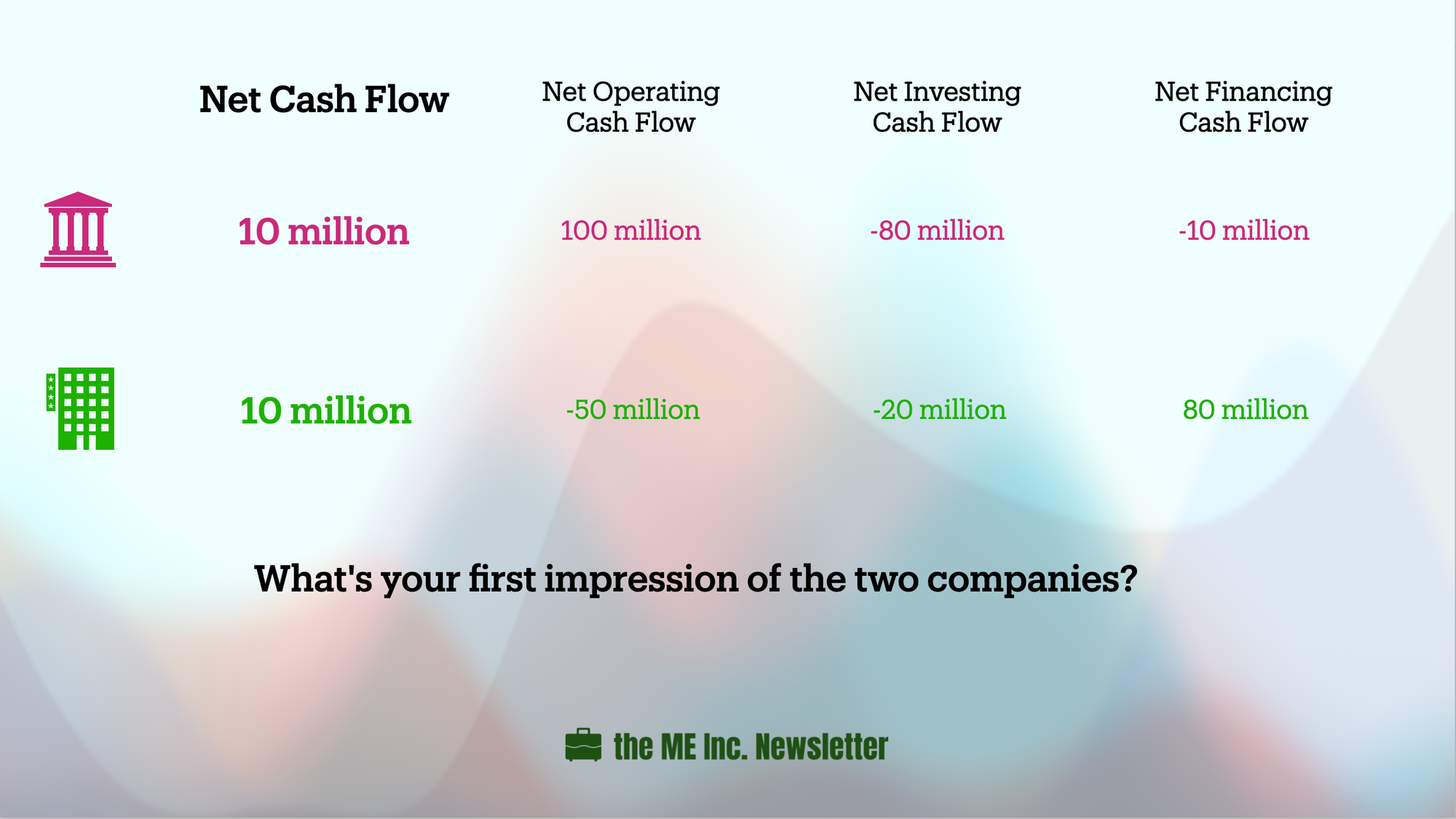Cash Flow Statement Importance
Net cash flow can be calculated from balance sheet alone. Then why do we need a separate financial statement - cash flow statement? Read on.

We know that a cash flow statement is in fact the description of our cash inflows and outflows. Both inflows and outflows are further categorized into operating, investing, and financing activities.
Why is this important?
We all know that cash inflows make our cash increase, and cash outflows make our cash decrease. Obviously, if I add up all my cash inflows and all my cash outflows respectively and then subtract the latter by the former, I will get a number representative of my net cash flow - the actual increase or decrease in the company's cash.
But we actually can get this number from another place that we have covered before: the balance sheet. In the balance sheet, our first asset item is cash. If we use our cash position of this year and subtract that of last year, we will get the net cash flow of this year.
Then what is the purpose of creating a separate financial statement, i.e. cash flow statement, considering that we've already arrived at the same number from our balance sheet?
Let's look at an example.
Say there are two companies, both of which has a net cash flow of 10 million dollars for the past year.
For Company A, the cash flow for operating activities is 100 million dollars. They spent 80 million on investing activities and 10 million on financing activities, making the net cash flow 10 million dollars.
For Company B, the cash flow for operating activities is negative 50 million dollars. They spent 20 million on investing activities, and raised 80 million dollars from financing activities, making their net cash flow 10 million dollars as well.
What's your first impression of the two companies?

Well, Company A might appear more appealing to most people because it creates positive operating cash flow, and since operating activities are the most predictable, the company might create similar cash flow from operating activities in the future.
But for Company B, where does its money come from? It comes from financing activities. Its operating activities and investing activities don't create cash, but consume cash. In this situation, the future of the company is rather uncertain, as we don't know if the company will be able to raise money next year.
This example shows us why we should not only know the amount of increase or decrease in cash, but also explore the reason for the change. Different reasons could mean very different things to us.
For example, we always want most of our inflows from operating activities, because they are more predictable and likely to last for a long time. Meanwhile, for outflows, we'd want our money spent on investment. Why? Because investments might create future returns for the company.
Therefore, only knowing if the cash flow is net positive or negative is insufficient; we also need to know the reason behind, and that is (one of) the reasons why we need the cash flow statement.
In fact, let's try dig a little deeper.
If you think about it, CASH is really just one asset item on the balance sheet. Why do we make a fuss about this one item, and not the rest of asset items?
In other words, what makes CASH so special that it deserves this special treatment?
Well you already know the answer from your everyday life, and that is:
Cash can be used to buy other assets almost instantaneously, but it'd take much longer time to turn other assets into cash. The company will be doomed if without sufficient cash and might go bankrupt.
In other words, having cash is closely related to the survival of a company.
From this point, we can come up with another reason why we need cash flow statement: we care about the survival of the company. In other words, we care about the risks of failure in our company's continuing operation.




